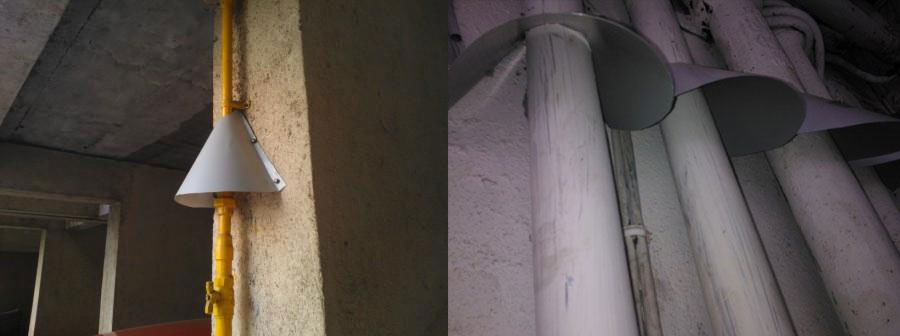Rodent Management


Rats inhabits almost all ecosystem in the world . Rats are master scavengers and they will eat any type of foods . The Genus Rattus consist 64 species world wide .Rats categorized in animal Taxonomy under Rodentia order .Rats possess a single pair of chisel – like incisor teeth that grow continuously throughout the their life span .
Taxonomy of Rats
Kingdom: Animalia
kingdom of all animals on the planet or the multicellular complex organism group
Phylum: Chordata
phylum encompasses the animals that have a bilateral body plan, and at some stage of life has a notochord, dorsal neural tube, pharyngeal slits, post anal tail, and a endostyle
Subphylum: Vertebrata
animals all have backbones
Class: Mammalia
Animals that having hair, sweat glands, and mammillary glands
Order: Rodentia
Rats possess a single pair of chisel – like incisor teeth that grow continuously throughout the their life span .
Superfamily: Muroidea
Family: Muridae
Subfamily: Murinae
Genus: Rattus
Anatomy
 Rats are just like humans and other mammal species when it comes to having a well-developed anatomy. They come complete with the key systems like digestive system, cardiovascular system, nervous system, endocrine system, and reproductive system. They have complete and sharp sensory organs. The ears, nose, eyes, brain, tail and other nervous system organs are modified to be clever and swift. Rats are bilaterally symmetrical.
Rats are just like humans and other mammal species when it comes to having a well-developed anatomy. They come complete with the key systems like digestive system, cardiovascular system, nervous system, endocrine system, and reproductive system. They have complete and sharp sensory organs. The ears, nose, eyes, brain, tail and other nervous system organs are modified to be clever and swift. Rats are bilaterally symmetrical.
They come standard like most mammals with teeth, mouth, nose, esophagus, trachea, heart, aortic arch, lungs, diaphragm, liver, stomach, spleen, pancreas, pyloric sphincter, bile duct, duodenum, jejunum, ileum, cecum, descending colon, rectum, and anus. They also have hair, sweat glands, and mammillary glands which they use to feed the live born young. These features classify the rodents in the class with the most evolved class of animals known as the mammalians.
Major types of Rats :
(Rattusrattus)
Appearance:
- 16 – 24 cm in length, with a tail longer than the head and body.
- 150 – 200g in weight.
- Pointed nose, large ears and a slender body when compared to the Brown Rat
Lifecycle:
- 5 – 10 young per litter; 3 – 6 litters a year.
- Gestation period of about 3 weeks.
- 12 – 16 weeks from birth to sexual maturity.
Habits:
- Appearance confined mainly to ports.
- Often climbs, agile, rarely burrowing and rarely outdoors in India.
- Preferred food is moist fruits.
- Will eat around 15g of food a day and drink 15ml
Norway Rat (Rattusnorvegicus).
- Up to 40 cm in length, with a tail shorter than the head and body.
- 350 – 500g in weight.
- Blunt nose, small ears and a thicker body when compared to the Black Rat (Rattusrattus).
- Normally gestation period of about 3 weeks.
- 10 – 12 weeks from birth to sexual maturity
Habits:
- Usually ground living and burrowing, but sometimes climbs. The only species to occur in sewers in India.
- Norway rat fond of cereals.
- Will eat around 30g of food a day and drink 60ml.

Lifecycle:
- 7 – 8 young per litter; 3 – 6 litters a year.
- Gestation period of about 3 weeks.
- 10 – 12 weeks from birth to sexual maturity
Bandicoot:
(Bandicotabengalensis) big in size and they can be up to 40 cm long (including the tail), are considered a pest in the cereal crops and gardens of India and Sri Lanka, and emit pigl like grunts when attacking.
Name of Bandicoot is derived from the Telugu language word pandikokku,
Rats act as Vector and spreads many diseases such as;
- Plague
- Murine typhus
- Leptospirosis
- Salmonellosis
- Rat bite fever
How can we identify rat problem?
Normally rats come out at night,:
Rat droppings – Rat droppings are dark brown and the size of a grain of rice. They are commonly found in concentrated places, making them easy to spot.
Bite marks – Rats’ teeth don’t stop growing and they gnaw on objects to file them down. Look out for bite marks on anything from wood to concrete.
Movement – Rats are nocturnal and if they are in parts of your house, such as the walls or under the floorboards, you may hear them moving around.
Footprints – If you suspect you have rats, you can test by sprinkling some flour and checking the next day for footprints in the flour.
Grease marks – From Oil and Dirt and mice often appear along runways .
Urine Stains : Rodent urine will fluoresce blue white under ultra violet light .
Sighting of Live or Dead Rodents.
Rodent Sounds – scratching ,digging ,fighting,squeaks.
Rodent Management – Rodo Killer Service ( RKS) :
Eliminating Existing Rodent colony.
- Non Chemical control .
- Chemical Control
Glue Trap station : ( Internal area )
Glue traps are more effective for capturing rats and it will be effective when placed in runway
Rodent Baiting method: ( External area )
Rodent Bait Station is an important constituent in chemical and non chemical control of Rodents. The Rodent Bait Station is a rectangular metal box in which rodent bait or glue trap is kept.
Preventing Future Infestation ( Exclusion of Rats )
Rat guard is the wonderful method for preventing rats to climb up to your house. Normally roof rats are very good climbers and it can climb cables and pipelines . Rat guards are fixed on sewer, drainage, CCTV cables and gas pipe lines.



 +91 97876 41122
+91 97876 41122